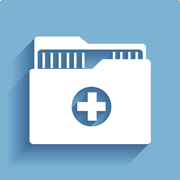
Getty Images/iStockphoto
Top 3 Challenges Limiting Patient Access to Health Data
Patients may struggle to access health data because of underutilized patient portals, ambiguous security protocols, and lack of health IT interoperability.
Patient access to health data is an important component of patient engagement because it empowers patients with knowledge about their conditions and incorporates the patient as a partner in care.
Access to health data isn’t only good for improving care. It also drives patient satisfaction. According to a data set from the Office of the National Coordinator for Health IT, eighty percent of patients with access to health data found it useful to review their information.
However, many challenges to universal patient health data access still remain. Between underutilization of technology, lack of patient education, and inadequate health IT interoperability, patients and providers are struggling to ensure robust patient health data access.
Underutilized patient portals
Due to requirements under the EHR Incentive Programs, patient portals have become an important piece of technology for healthcare providers. Because patient portals are generally tethered to the EHR, they give patients a view into their health records, allowing them to learn more about their health and become more active in their care.
However, research shows that these tools are often underutilized.
Data from the American Medical Association shows that patient portal adoption is up to 92 percent, but these tools aren’t always being used to their fullest potential. Patients may be able to look at their data, but they aren’t using it to better their health.
A HealthMine survey shows that nearly 60 percent of patients have EHR access through a patient portal, and yet only 20 percent use that access to make health decisions. Fifty-five percent of the 500 patients surveyed said they only use patient portals to look at and review their health information.
Other research shows that patient portals aren’t catching on because patients don’t think they need them.
One team of researchers studying the effectiveness of patient portals for helping pediatric patients manage asthma found that patient portals can help enhance patient health, but they aren’t widely adopted because the study participants, most of whom were on an asthma control medication, thought their health was already well-managed.
When patients do take advantage of the portal, it can improve their care. The study found that patients who adopted the portal were prescribed new treatment methods and more efficient medication refills.
Ambiguous security protocols
Patients have many options for accessing copies of their medical records under HIPAA. The trouble stems from a lack of knowledge about patient rights to their health data.
The Office of the National Coordinator recently tackled this issue by creating informative videos to educate patients on their rights to their health information.
“Many people are not fully aware of their right to access their own medical records under the Health Insurance Portability and Accountability Act (HIPAA), including the right to access an electronic copy when their health information is stored electronically,” said Karen DeSalvo, MD, MPH, MSc, National Coordinator for Health IT, and Jocelyn Samuels, JD, director of the Office for Civil Rights.
In an ONC blog post, DeSalvo and Samuels emphasized the importance of patients knowing these rights, explaining that access to health data helps improve patient engagement.
“Providing individuals with easy access to their health information empowers them to be more in control of decisions regarding their health and well-being,” the two wrote. “Individuals with access to their health information are better able to monitor chronic conditions, adhere to treatment plans, find and fix errors, and directly contribute their information to research.”
Under HIPAA, patients have the right to access any PHI that falls under a designated record set directly pertaining to the patient’s health. Patients may gain access to this health data by submitting a written request for the data to be sent to them. Patients may also sign a request for the data to be released to a specified representative.
Limited health data interoperability
As with most current health technology endeavors, interoperability is crucial for patient access to health data. Without an interoperable health tool, patients are unable to access any health data their providers transmit to them.
Ensuring patient access to interoperable health technologies is vital for improving patient engagement, and ultimately quality healthcare. At this year’s World Health Care Conference, National Association for Trusted Exchange CEO Aaron Seib said this is because care must be patient-centered.
“Ultimately, the consumer is the only person who is a part of every encounter that they have,” Seib said. “And if they are going to have 100 percent information awareness to share with their next provider and to participate and actually partner with all their caregivers, not just the ones that are in the HIEs, not just the ones that are using a particular EMR, but every provider that they’re going to get care from, we have to enable them to get data in the app of their choice.”
Many health IT companies are working toward ensuring interoperability. NATE, for example, has recently teamed up with MediPortal, a personal health record (PHR) company. This partnership will allow patient-generated health data stored in the PHR to seamlessly transfer to a physician’s EHR, and vice versa.
Although patient portal access, HIPAA protocols, and interoperability present barriers toward patient engagement, there is potentially a light at the end of the tunnel.
Federal incentive programs are working to boost meaningful use of patient engagement technologies such as patient portals. ONC displays continued efforts toward educating patients of their rights to health data under HIPAA. Health technology developers, although amidst much debate, are working to determine the best path forward for health data interoperability.
All of these efforts point to a potentially bright future for patient engagement, and vast opportunities for patients to access their health data.
Dig Deeper:
- How Patient Portals Improve Patient Engagement
- How Does Patient Portal Use Affect Various Patient Populations?







